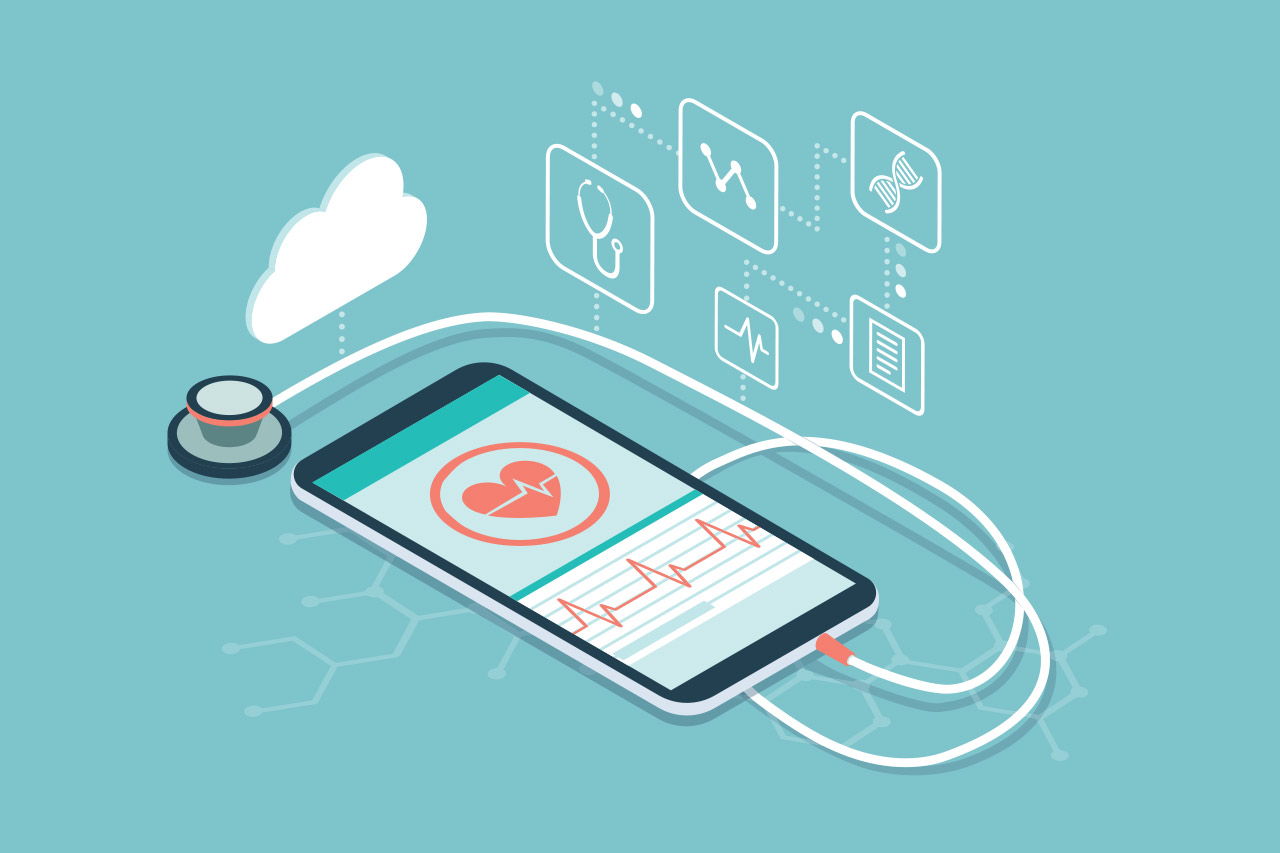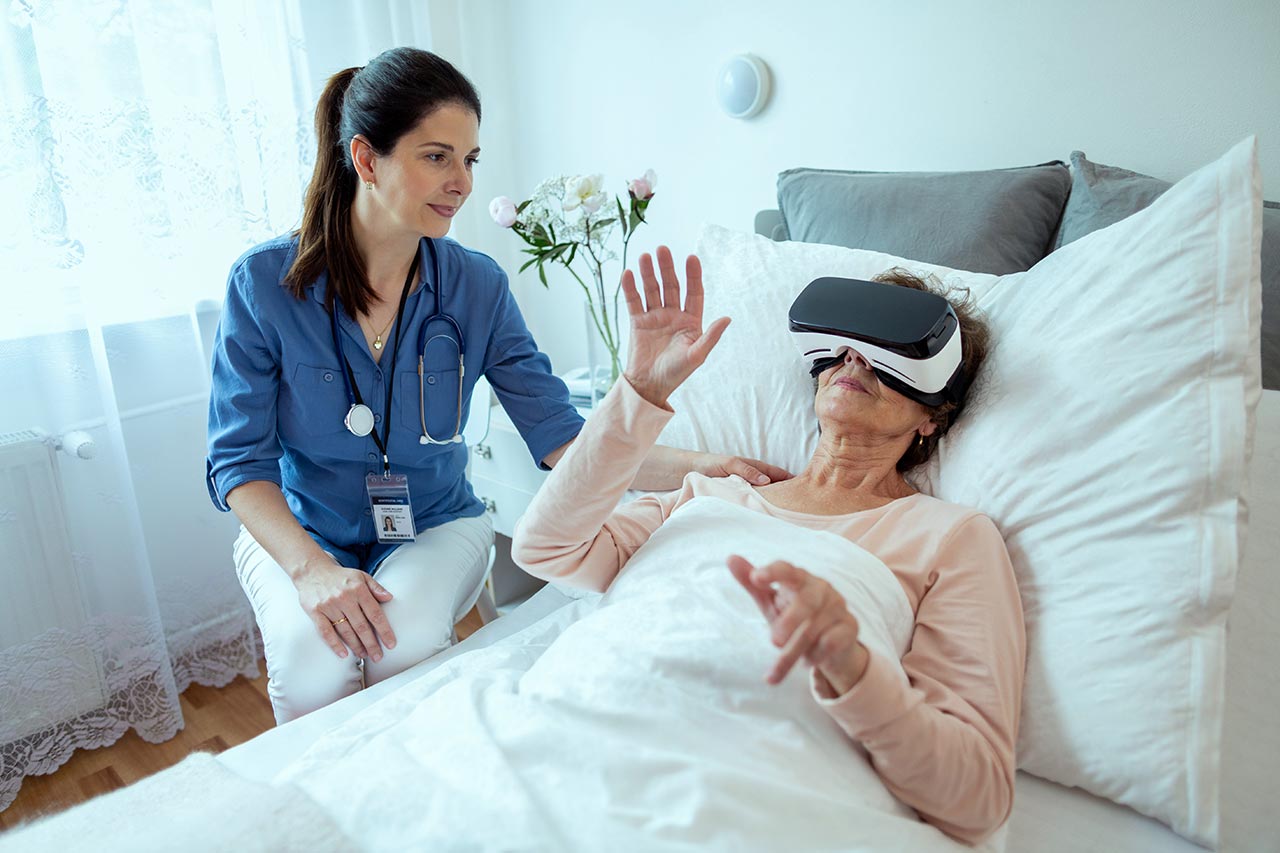A definition of digital therapeutics
Digital therapies (or DTx for “digital therapeutics”) form a new therapeutic approach. They are digital solutions that have demonstrated a direct impact on the condition of a pathology by replacing, complementing or increasing the clinical benefits of a traditional therapy. By their nature, DTxs generate data on a patient’s condition or behaviour. They should then be used to improve the condition of the latter, or to review its support (efficiency or economies of scale).
DTx can take many forms, from applications to therapeutic video games, connected pills and virtual reality solutions. DTx is an emerging class of therapeutic alternatives that complements, enhances or (in the longer term) replaces traditional drug approaches.
Despite this diversity of forms, between hardware and software, they all meet three criteria:
- Demonstration of clinical or medico-economic benefit supported by sound scientific studies
- The approval of a regulatory authority based on their status and their claims (generally class I or even II medical device)
- The recommendation or even the prescription by a health professional
Like many digital health solutions, DTxes find their full value in chronic pathologies or conditions that persist over time. Also, it is not surprising to find them in areas such as diabetes, cancer, addictions or neuropsychiatry.
A diversified and abundant ecosystem
Since the early 2000s, there have been many signals showing that DTx are attracting interest.
The first is the creation of an ecosystem of specialized actors around these approaches. Beyond the growing number of start-ups and SMEs that have been created in this field, we are beginning to see the first signs of a horizontal organization. One example is the creation of the Digital Therapeutics Alliance (DTA), a structure based in the United States. The DTA’s mission is to provide a clear framework and definition for digital therapeutics. It recently published a founding report on the subject.[1]
The second is the gradual integration of these alternatives in the field. Approval cases, notably by the FDA in the United States, are increasing every year. In Europe, these approvals are rarer but will likely follow suit once the results have been demonstrated.
The third and final signal is the strong interest of the pharmaceutical industry. “Most of the major pharmaceutical players have taken up the subject of DTx and forged alliances.” says Benjamin D’HONT, a great e-health explorer at ALCIMED. Co-development, equity investment or even acquisition, are just some of the strategies that have been used to give them a leg up. We can cite as examples:
- Sanofi’s capital injection (€17 million) into Click Therapeutics[2]
- The co-development and commercialization partnership between GSK and Propeller Health (respiratory diseases)[3]
- The multiple partnerships established between Novartis and Pear Therapeutics (schizophrenia, sclerosis in plates)[4]
The barriers to be overcome
As with any digital development in the health sector, the development of DTx faces several barriers that will have to be gradually overcome in order to facilitate their adoption.
The first barrier is to detach the DTx from their “well-being” counterpart. There are many digital wellness solutions – over 300,000 so-called mobile health applications on Apple and Google stores. Many of them have never demonstrated any benefit. Some actors do not hesitate to use the term “charlatanism” to describe them. Of course, this abundance is harmful for the development of real, credible and sustainable alternatives in the eyes of industrialists, carers and patients.
The second barrier is a regulatory one. Provide a clear, simple and transparent legal framework enabling DTx players to deploy their solutions on an international scale is a key factor of their successful dissemination. The regulatory uncertainty is fading but a lot remains to be done to put DTx at equal level with their counterparts (drug or medical device).
The final barrier is to transform attitudes and ensure that the stakeholders communicate with each other. DTx are disrupting the established roles of the actors of the health ecosystem. “Monitoring compliance, patient empowerment, valuing the data, questioning the hegemony of the drug, legal responsibilities… all these subjects require realigning the interests of each stakeholder.” adds Benjamin D’HONT. Industrialists, payers, carers and patients are confronted with new questions, such as :
- As a laboratory, do I want to invest in an approach and business model that is far removed from my core business, sometimes negatively described as “box salesman”?
- As a payer, how do I build an activity model around the data generated by the DTx?
- As a caregiver, am I ready to use in my practice the information that the DTx will promote?
- As a patient, do I want to share information about my medication with a caregiver? With a pharmaceutical company?
The development of DTx represents a tremendous opportunity for the pharmaceutical industry to diversify its portfolio and strengthen its competitiveness while delivering health solutions beyond drugs. The past 5 years have shown the premises of a very real convergence which should support the development of DTx in the medium term.
[1] https://www.dtxalliance.org/wp-content/uploads/2018/09/DTA-Report_DTx-Industry-Foundations.pdf
[2] https://www.mobihealthnews.com/content/click-therapeutics-lands-17m-funding-round-led-sanofi
[3] https://www.propellerhealth.com/2017/08/24/propeller-health-announces-expansion-of-digital-health-collaboration-with-glaxosmithkline-to-improve-management-of-asthma-and-copd/
[4] https://www.fiercepharma.com/marketing/novartis-and-pear-therapeutics-partner-again-time-for-commercialization-deal-substance



